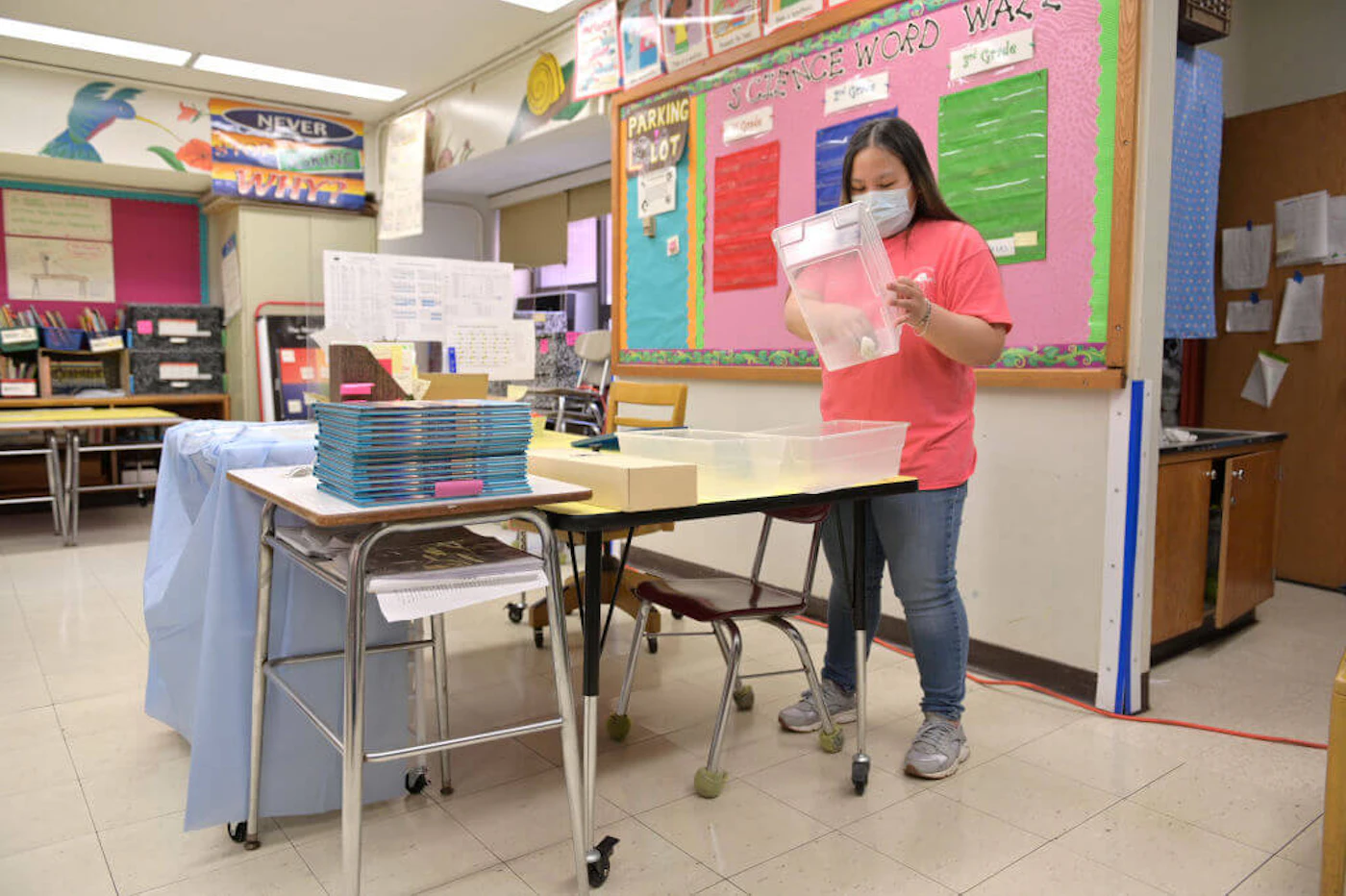Study finds students of color are harmed more than white students due to virtual schooling.
As the fall school semester comes to a close, new data shows remote education is causing millions of students to fall behind. And it is students of color who have been hit the hardest, a fact that will widen the existing education gap.
Research from consulting firm McKinsey found the shift to remote learning set white students back one to three months in math, while students of color lost three to five months. The data also suggests that those losses will be compounded this year as school districts rely heavily on remote learning.
A stark example of this is illustrated in Fairfax County Public Schools in Virginia, one of the largest districts in the nation. An internal analysis published in November found that the percentage of middle and high school students earning an F in at least two classes jumped by 83% between the last academic year.
School district data from across the country shows similar trends and notes a sharp increase in failing grades during the fall semester, especially for vulnerable students.
Remote learning also clearly favors students with access to better resources. Students with their own computers or tablets, with family members at home to help them with assignments, and reliable internet access are faring much better than students with limited access to each.
Data from the New York Times shows students’ access to computers have increased since last spring, but there is still a large racial disparity. For example, 89% of Black students had access to a computer for online learning this fall, up from 79% last spring. But nearly 93% of White students had access in the fall.
Even students with increased access to resources are struggling more in school and math is proving more difficult than reading, the McKinsey data suggests.
Meanwhile, New York City is reopening some of its public schools to in-person instruction Monday, after the city experienced more than 3% positive coronavirus test rate earlier this month. But other school districts across the country have largely been closing, as states grapple with rising infection rates. Eighteen out of the nation’s 75 largest public school districts have switched to remote learning over the past month, according to The Wall Street Journal.
School districts in Alabama, Oklahoma, and Kansas all closed their doors in the last week. California schools were already closing as the state implemented new restrictions to slow the spread of COVID-19.
In some major districts the virus claimed lives or led to staff shortages. In Tulsa, Oklahoma, two school district employees died after testing positive for coronavirus. In Wichita, Kansas, so many school employees were forced to quarantine that running the schools became difficult.
Parents and education advocates have noted their frustration over school closures. They argue that closing schools before restaurants and indoor dining, which has shown a higher transmission rate than schools, prioritizes the economy over education.
However, New York City officials decided to reopen schools amid changing thinking over the importance of maintaining in-person instruction, especially for young students.
The promise of a vaccine in the near future provides a light at the end of the tunnel for much of normal life. However, as vaccine trials are just beginning in children under 18 the school day could still look pretty different even next fall.




